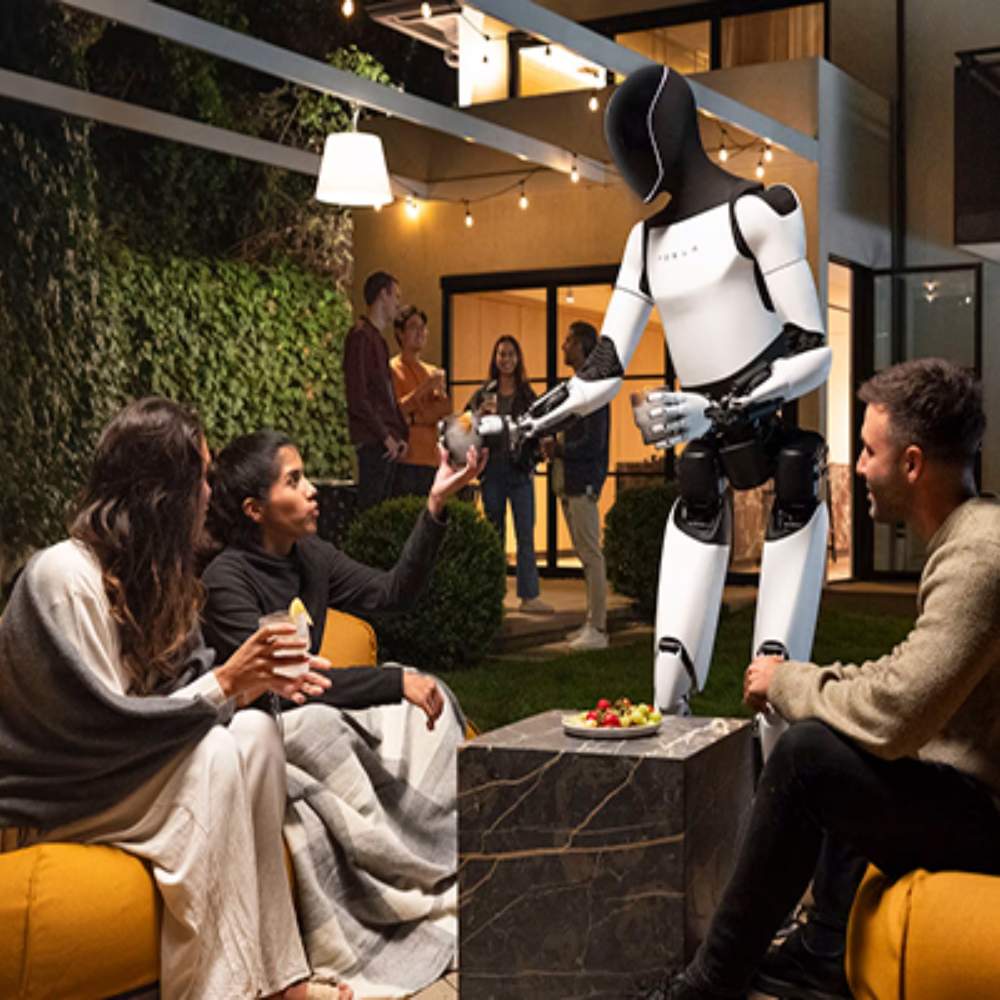Source – robotics247.com
The Event’s Focus on the Robotaxi
At Tesla’s recent We, Robot event held at Warner Bros. studio lot in Hollywood, the spotlight initially shone on the unveiling of the much-anticipated robotaxi. However, Elon Musk’s humanoid robot, Optimus, truly captivated the audience. Attendees were left in awe as multiple Optimus robots navigated the crowd untethered, showcasing remarkable advancements in technology.
Just two years ago, these robots struggled to even make it on stage independently. The latest iteration, however, was able to engage with guests, playing games like rock-paper-scissors and pouring drinks from a tap. Musk confidently predicted that this robot would become the biggest product of any kind in history, urging attendees to treat the robots kindly as they moved about.
A Spectacle of Technology or a Trick?
While the Cybercab and the newly introduced Robovan garnered some attention, the experience of interacting with a humanoid robot created a sense of excitement reminiscent of science fiction. Attendees expressed amazement, with one noting the surreal experience of conversing with a robot. Yet, despite the impressive display, there was a significant caveat: the robots were not operating on true artificial intelligence.
It was revealed that the Optimus robots were being remotely controlled by humans wearing specialized suits that translated their movements to the machines. One operator even admitted in a video that they were not fully autonomous yet. This revelation echoed a previous incident where Musk showcased Optimus folding a shirt, only for observers to notice a human hand operating the robot, raising questions about transparency.
The Debate Over Transparency and Authenticity
While Tesla has trained its robots with human assistance, Musk did not clarify during the event that the robots were essentially being controlled like puppets. Some attendees and industry experts voiced their concerns about the presentation, arguing that it misrepresented the robots’ capabilities.
Josh Wolfe, co-founder of Lux Capital, commented on the event, praising the low-latency remote control aspect but criticizing the demonstration as misleading. Neither Musk nor Tesla responded to inquiries seeking clarification on the demonstration.
Musk’s Ambitious Vision for Optimus
Despite the controversy surrounding its autonomy, Optimus is not just another prototype in Musk’s vision. He believes it could become Tesla’s most significant product, predicting a potential price point of $20,000 with manufacturing costs around half that. Musk envisions sales reaching an astonishing 100 million units annually.
With such ambitious projections, he has suggested that annual earnings from Optimus could hit $1 trillion, placing a potential valuation of the business at $25 trillion. This vision underscores Musk’s unwavering belief in the transformative potential of Optimus.
Mixed Reactions from Tesla Influencers
The event drew mixed reactions from Tesla enthusiasts. Omar Qazi, a prominent influencer with close ties to Musk, acknowledged the human control over the robots but emphasized the mechanical achievements of the prototype. He challenged skeptics to create their own robots and navigate them through crowded events.
Conversely, Tesla content creator Jeremy Judkins expressed disappointment over the lack of transparency, highlighting that the event offered no indication that the robots were remotely operated. This sentiment reflects a broader desire among fans for honesty in Tesla’s presentations.
Conclusion
While the unveiling of Tesla’s robotaxi captured initial attention, it was Optimus who stole the spotlight. The impressive display raised important questions about the authenticity of the technology being showcased. As Musk continues to promote a future where humanoid robots play a vital role, the need for transparency in demonstrating their capabilities remains crucial for public trust.







